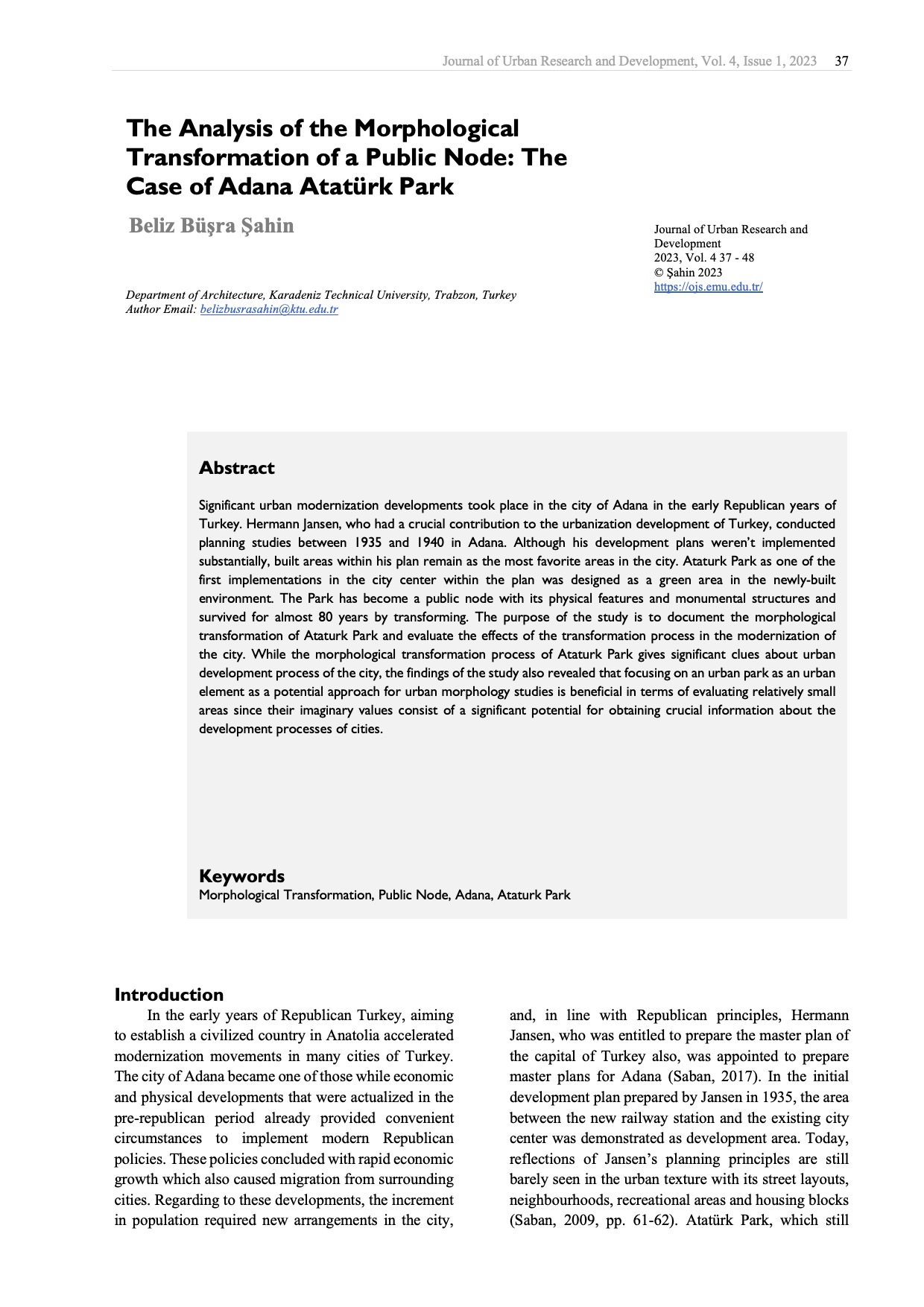The Analysis of the Morphological Transformation of a Public Node
The Case of Adana Atatürk Park
Keywords:
Morphological Transformation, Public Node, Adana, Ataturk ParkAbstract
Significant urban modernization developments took place in the city of Adana in the early Republican years of Turkey. Hermann Jansen, who had a crucial contribution to the urbanization development of Turkey, conducted planning studies between 1935 and 1940 in Adana. Although his development plans weren’t implemented substantially, built areas within his plan remain as the most favorite areas in the city. Ataturk Park as one of the first implementations in the city center within the plan was designed as a green area in the newly-built environment. The Park has become a public node with its physical features and monumental structures and survived for almost 80 years by transforming. The purpose of the study is to document the morphological transformation of Ataturk Park and evaluate the effects of the transformation process in the modernization of the city. While the morphological transformation process of Ataturk Park gives significant clues about urban development process of the city, the findings of the study also revealed that focusing on an urban park as an urban element as a potential approach for urban morphology studies is beneficial in terms of evaluating relatively small areas since their imaginary values consist of a significant potential for obtaining crucial information about the development processes of cities.


